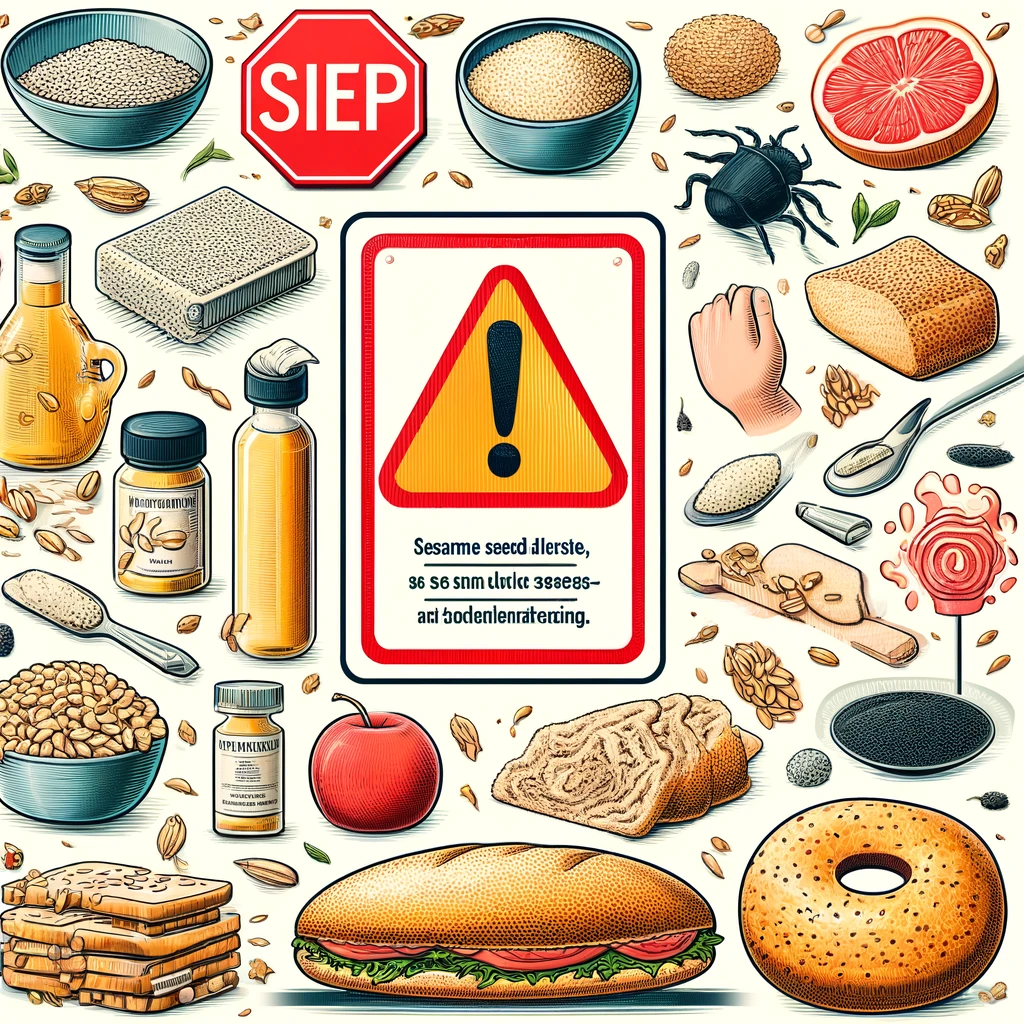Sesame seeds, revered for their distinctive nutty flavor and impressive nutrient profile, are integral to numerous global cuisines. Packed with protein, healthy fats, and vital minerals, they’re often hailed for their health benefits. However, for some, sesame seeds can pose serious health risks due to allergic reactions. This article explores the side effects and allergies related to sesame seeds, offering essential information for those who may be at risk.
What are Sesame Seed Allergies?
A sesame allergy is an adverse immune response triggered by the proteins found in sesame seeds. This type of allergy can develop in any individual, although it is more prevalent among those with a family history of allergies. Recognized as one of the top food allergies worldwide, sesame seed allergies can lead to serious health implications if not properly managed.
Common Allergic Reactions to Sesame Seeds
The range of allergic reactions to sesame can vary significantly from mild symptoms such as hives, itching, and skin redness, to severe reactions like anaphylaxis. Anaphylaxis is a rapid, life-threatening response that demands immediate medical intervention and can manifest as difficulty breathing, throat swelling, a sharp drop in blood pressure, dizziness, and fainting.
Given the unpredictable nature of allergic reactions, even individuals who have previously experienced mild symptoms should remain cautious and prepared for more severe reactions.
Identifying Sesame Seeds in Foods
Avoiding sesame seeds can be challenging, especially since they are often hidden in various foods. Beyond obvious sources like breads and sushi, sesame seeds might also be found in sauces, dressings, and snack bars. They can even appear in cosmetics and pharmaceutical products, making diligent label reading a critical practice for those with allergies.
Understanding and recognizing food labels is crucial. Many regions require that sesame be clearly indicated on food packaging, helping those with allergies make safer food choices.
Prevention and Management of Sesame Allergies
The primary strategy for managing a sesame allergy is avoidance. For those with severe allergies, steering clear of processed foods or establishments where cross-contamination is possible becomes necessary. Carrying an epinephrine auto-injector, such as an EpiPen, is advised for individuals at risk of anaphylaxis, providing a lifesaving measure in the event of a severe allergic reaction.
Regular consultations with an allergist are recommended to confirm the presence of a sesame allergy and to develop an effective management plan. Allergy testing can ascertain the severity of the allergy and educate patients on how to navigate their dietary restrictions safely.
Impact on Daily Life and Dietary Adjustments
Living with a sesame allergy affects daily life and requires significant dietary adjustments. Learning to recognize safe foods and understanding how to find alternatives can empower those affected. For instance, instead of sesame oil, one might use olive oil, and seeds like pumpkin or sunflower can substitute sesame seeds in recipes.
Additionally, educating those around you—from family members to restaurant staff—about the seriousness of sesame allergies is crucial. Awareness ensures safer dining experiences and helps prevent accidental exposures.
Conclusion
While sesame seeds offer numerous health benefits to the general population, they represent a significant risk for individuals with sesame allergies. Understanding the potential side effects and learning effective management strategies are vital for maintaining health and safety. If you suspect a food allergy, consulting with healthcare providers for accurate diagnosis and tailored advice is essential. With careful management and informed choices, those with sesame allergies can lead full and healthy lives.

